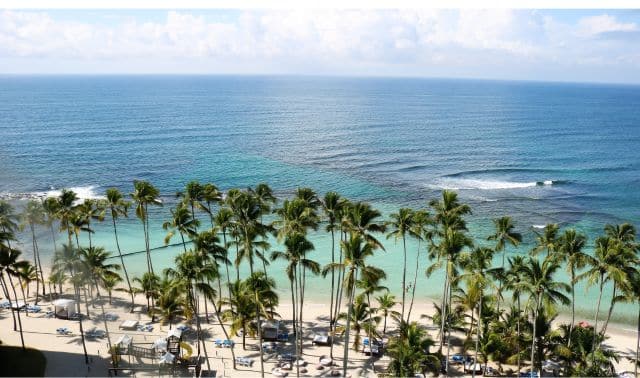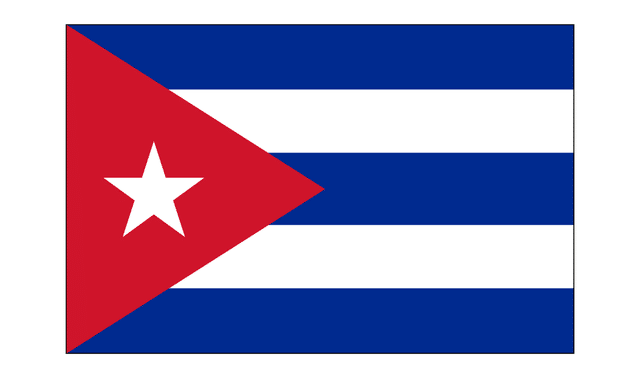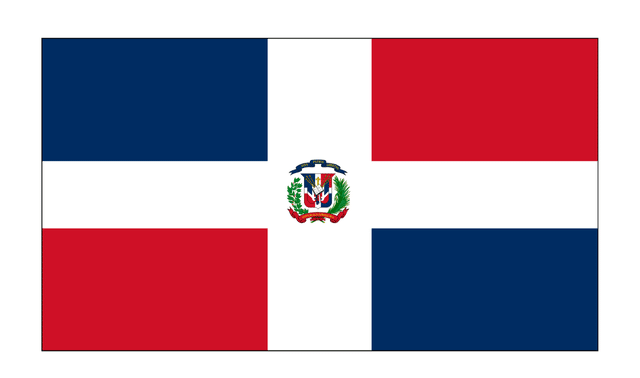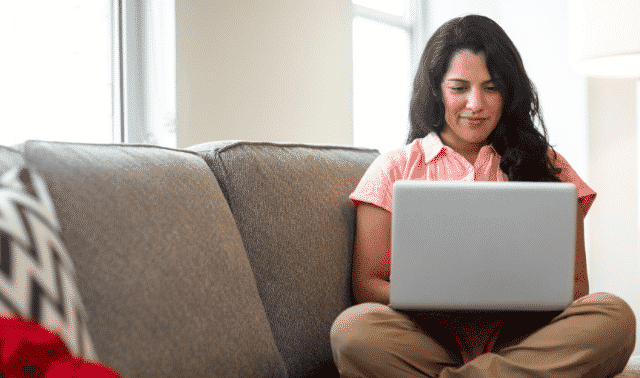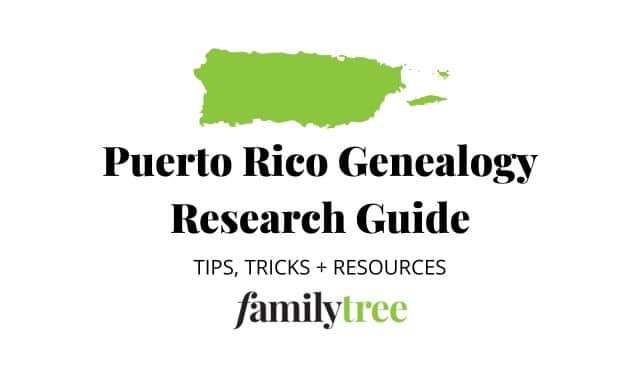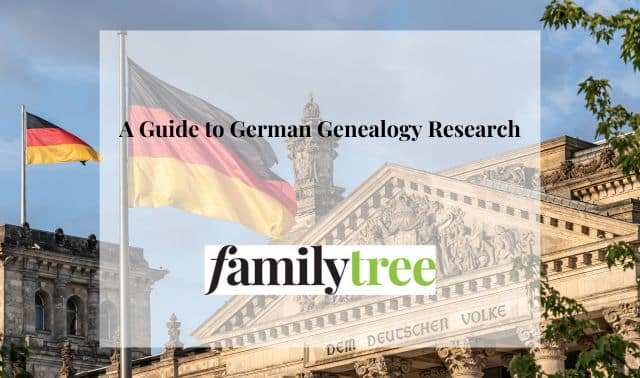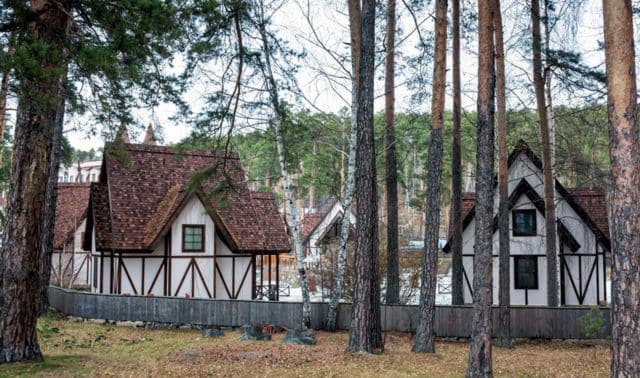Sign up for the Family Tree Newsletter! Plus, you’ll receive our 10 Essential Genealogy Research Forms PDF as a special thank you.
Get Your Free Genealogy Forms
"*" indicates required fields
The Caribbean is home to hundreds of islands, full of rich heritage for millions of people around the world. This guide explores the history and genealogical resources of the Caribbean’s most-populous countries.
For any islands not included here (such as the Bahamas and the Lesser Antilles), we recommend first beginning with any records at the country’s current official government website. Once you’ve exhausted those sources, continue your search for that country in online records for countries that had a colonial presence there.
One of the most effective ways of researching your Caribbean ancestors is to go through social media groups related to research for the location of your interest. For each country in this list, you will see a related Facebook group. These groups are not associated with Family Tree Magazine and have their own set of rules that members must agree to before joining.
Many of these groups have a Files section where you can see uploads from other members’ research. Anything found on social media must be double-checked for accuracy, but these groups are a great starting point if you’ve hit a brick wall.
Tip: Your search for records may take you to websites in languages in which you are not fluent. Some of the websites may offer an English translation. When they don’t offer an easy way to translate, we highly recommend the translation capabilities of the internet browser you are using (Chrome, Safari, Edge, Firefox, etc).
Common Ground: Understanding the Caribbean Islands
Each of the islands mentioned in this article has a distinct history, and thus a different set of records and things to consider when researching there. But here are some commonalities to the various islands we’ll cover.
Indigenous Origins
Before Christopher Columbus’ voyage to the Americas, the volcanic isles of the Caribbean were the home of the Taíno, Carib and other indigenous people. They have lived on the islands for millennia.
Their historical population number remains hotly debated. Estimates range from 200,000 to (for some of the larger islands in the Antilles) the millions. As in other parts of the Americas, indigenous populations in the Caribbean collapsed after contact with Europeans from disease, slavery and warfare.
Unfortunately, much of the oral history traditions of the Taíno and other nations were also lost during colonization. But church records and written accounts may mention indigenous peoples. And we know that large Caribbean islands were often ruled by multiple cacique (chieftains), who could be male or female. Each led a specific area or cazicagos (chiefdoms). Looking up the names of any relevant cacique and cazicagos may help you make unexpected connections in your research.
DNA tests have historically underrepresented indigenous people in general, and in the Caribbean specifically. They provide only rough estimates of possible indigenous ancestry, though they continue to improve in detail and accuracy.
Slavery and European Colonization
All the countries in this article—and nearly all the islands in the Caribbean—were at some point slave colonies for European colonizers. Records of slavery are scarce. But when they’re available, they’re truly a power research tool. And Catholic records may document African slaves becoming baptized and given new names.
The following websites and collections will be of interest when researching slavery:
- The Beyond Kin Project
- Centre for the Study of the Legacies of British Slavery
- Enslaved: Peoples of the Historical Slave Trade
- SlaveVoyages
You should identify and research any controlling nation in your island of interest. For example, Spain retains many digitized records that can help sleuths researching ancestors in Cuba, the Dominican Republic, Trinidad and others. England had a stake in islands like Jamaica, as well as important battles in Trinidad. French records are also important when conducting research for countries such as Haiti and Jamaica.
Here are online resources for each colonizing country:
England
- The National Archives (UK): Records and research guides covering the United Kingdom’s former colonies in the West Indies
- The British Library: Digital offerings include the “Endangered Archives Programme” and the “Americas and Oceania Collection” blog
- Free BMD: Simple searches of birth, marriage and death records, which were kept in UK dependencies beginning in the mid-1800s
France
- Archives Nationales D’Outre-Mer (National Overseas Archives): Records from France’s past and present overseas territories, including in the Caribbean
- Généalogie et Histoire de la Caraïbe (Genealogy and History of the Caribbean): “The oldest genealogy site in France” that shares bulletins, articles and documents from the West Indies
Spain
- PARES portal (Portal de Archivos Espanoles): Website of records kept of Spanish overseas territories
- Archivo de Navegantes: Search for emigrants leaving Spain for Latin America
- Biblioteca de la Universidad de Cantabria: The passenger finder (“Buscador de Pasajeros”) can help you find travelers
Immigration to America
As it grew in geography and power, the United States became the land of promise for people from everywhere in the Caribbean. This was especially true throughout the tumultuous 20th century, which drew many to the US mainland.
Find passenger arrival lists on FamilySearch and Ancestry.com. Ports near the Gulf of Mexico (New Orleans), the Caribbean (Miami) or the Atlantic Ocean (Atlanta, Baltimore, Boston and New York City) attracted the most Caribbean immigrants. But don’t forget to check other ports of entry.
Cuba
Historical Summary
With a name likely derived from the Arawak language for “where fertile land is abundant,” Cuba depended heavily on the sugarcane crop in the 18th century.
Slavery was abolished in 1886, and Cuba declared its independence in 1898. After the Spanish-American War, Cuba began a tumultuous relationship with its neighbor (and one-time occupier) the United States. A revolution in 1959 installed Communist leader Fidel Castro. Many Cuban-Americans live in Florida (Miami, in particular).
When researching Cuba, expect the majority of sources and online conversation to be in Spanish. (Cuba was a Spanish colony for nearly 400 years.) Cuba is a predominantly Roman Catholic country; different parishes correspond to areas throughout the island.
Online Resources
- Archivo Nacional de la República de Cuba (National Archives): Also see the Facebook page
- The Cuban Research Project: A volunteer-run website with searchable marriage, death, burial, military, business and naturalization records. Also see its Facebook group
- FamilySearch: Spanish military service records
- Genealogia Cubana Facebook group
- Slave Societies Digital Archive: A Vanderbilt University project that has 100,000 digitized baptism records
Haiti
Historical Summary
Columbus’ arrival in December 1492 began a two-century history of Haiti as a prominent trading post. The French, seeing an opportunity to undercut their rival Spain, established a foothold on the western part of La Hispaniola. The French colony of Saint-Domingue (Haiti) was split off from the rest of Hispaniola in 1697.
France brought many African slaves to its new colony, resulting in the enslaved outnumbering free citizens 10 to 1. Slave results ensued by the 1750s, ultimately leading to civil war. Inspired by the French Revolution, Haitians rose up against the French in 1791 and declared independence in 1804. Haiti became the first (and to date, only) country to win its independence through a slave revolt.
As an independent nation, Haiti has continued to see its share of tumultuous changes in power. Multiple emperors and dozens of short-term leaders have caused political instability, often affecting the availability of genealogical records. The United States’ occupation in the early 1900s, violent dynasties, and natural disasters (notably an earthquake in 2010 that killed hundreds of thousands) prompted many to flee. Kidnappings, violent crime and poverty have led to further political unrest in recent years.
The United States has the largest Haitian diaspora population, notably in Miami, Chicago and New York City. New Orleans (another former French-speaking colony) attracted emigrants during the Haitian Revolution of the late 1790s and early 1800s.
Online Resources
- Archives Nationales d’Haïti (National Archives)
- Association de Généalogie d’Haïti (Haitian Genealogy Association): Online access to the National Archives’ civil registers; also see the Facebook group
- FamilySearch:
- Consulate registers: A collection of 19th-century vital records for British nationals living in Haiti
- Etat détaillé par commission chargée de répartir: Records of compensation made from France to French people who gave up their property in Haiti between 1815 and 1831
- University of Florida Digital Collections: Includes many Haitian records and publications; filter on Haiti
Dominican Republic
Historical Summary
Known as Quisqueya (“Mother of the Lands”) to the Taíno and many of its current citizens, the Dominican Republic has seen both French and Spanish colonizers.
After their arrival in 1492, the Spanish put most of their colonization efforts to the area of the island now known as the Dominican Republic. Santo Domingo is the oldest permanent European settlement in the Americas. In 1795, the Spanish ceded the Dominican Republic to France. The colony returned to Spain in 1809, but declared independence as “Spanish Haiti” in 1821.
The following two decades saw Haiti occupy the fledgling nation. Dominicans ousted Haiti and achieved nominal independence in 1844—after the destruction of much life and infrastructure, and the diminishment of the Catholic Church’s role in public life. The Dominicans finally removed Spain in 1865.
The 20th century saw decades of dictatorships, US occupation, military coups and a civil war. But today, the Dominican Republic has the largest economy in the Caribbean.
Dominicans in the United States are the second-largest Latino immigrant group in the Northeast after Puerto Ricans. (Nearly half of all Dominican Americans live in New York City alone.) Dominicans were historically drawn to other French- or Spanish-speaking colonies on the US mainland, such as New Orleans and Florida.
Online Resources
- Archivo General de la Nación (AGN; National Archives)
- FamilySearch:
- Catholic Church records: Some date to 1590
- Civil registration: Beginning in 1744
- Genealogía Nuestra: Our Caribbean Genealogy: Heavy focus on researching in the Dominican Republic, with resources for many of the countries on this list
Jamaica
Historical Summary
The Taíno called the island Xaymaca, “Land of Wood and Water.” The Spanish arrived in 1509 and stayed for nearly two centuries, bringing with them disease and African slaves. In 1655, the English captured Jamaica from Spain and effectively held control of the island until the 20th century. For several decades, Britain encouraged piracy in the area to keep Spain in check.
During this time of chaos, some former Spanish slaves escaped to the mountains. Called the Maroons, they managed to persevere in remote locations, some marrying the remaining Taíno. They also rose up against both the British and Jamaican colonial forces.
Over the next two centuries, Britain held on to Jamaica, bringing in hundreds of thousands of slaves and turning the colony into a valuable sugar producer. Though the slave trade in the British Empire was abolished in 1807, not all enslaved people in Jamaica were given their freedom until 1838.
After a long period as a crown colony, Jamaica became independent in 1962 and maintains membership in the British Commonwealth of Nations. Today, most Jamaican Americans live in South Florida and New York City.
Online Resources
- Jamaica Archives and Records Department
- FamilySearch:
- Church of England parish registers: The Church of England was the island’s established church until 1870, though only a small number of Jamaicans practice Anglicanism today
- Dissenter marriages, 1840s: Records of non-Anglicans
- Institute of Jamaica: Parent organization for the country’s museums and the African Caribbean Institute of Jamaica
- Jamaican Genealogy Resources Facebook group: Users here share various articles, links and photographs
- National Library of Jamaica: Holdings include manuscripts, newspapers and maps
- Registrar General’s Department: Repository for birth, marriage and death records
- University of the West Indies, Mona Library: Historical newspapers, records of the Maroons, maps and more
Trinidad & Tobago
Historical Summary
Trinidad and Tobago is the southernmost country in the Caribbean island chain; Trinidad is just 7 miles from the coast of Venezuela. The indigenous people are believed to have called the islands Caeri (“the Island”) and Urupaine (“Large Snail”), respectively; Trinidad (Trinity) and Tobago (possibly related to Tobacco) were the names used by the Spanish.
Columbus made contact with the Arawakan- and Cariban-speaking peoples of Trinidad in 1498. Spain ruled the island but settled it only sparsely until 1783, when it encouraged Catholic settlement on Trinidad. Many who came at the time were French, who began to dominate the island alongside African slaves and arrivals from other Caribbean islands and even the East Indies. Spain ceded Trinidad to Great Britain in 1802.
Tobago, for its part, was home to Caribs and Galibi, and wasn’t settled in earnest by Europeans until the late 1700s. The island changed hands between Britain and France numerous times over the next few decades, finally coming under British jurisdiction in 1814. Facing financial strife, Tobago was incorporated with Trinidad in 1889.
Trinidad and Tobago achieved independence from the United Kingdom in 1962, and remains a member of the British Commonwealth of Nations. Like many other Caribbean groups, immigrants from the islands to the United States tended to settle in New York and Florida.
Online Resources
- National Archives: Includes Trace Your Ancestral Roots in Trinidad and Tobago, a genealogy guide published by the archives
- FamilySearch:
- Colonial Venezuela military records: Late 18th-century service records for the Province of Caracas, which at the time included Trinidad
- Manumissions and indentures: Records of the enslaved from Trinidad, sorted by name of enslaver
- Trinidad and Tobago Genealogy Facebook group: Users share “Trinidad and Tobago genealogy information and connections”
Conclusion
The search for your Caribbean ancestors will lead to an abundance of information, but it is quite dispersed in many sources. Through dedication and effort, you are sure to get results!
Related Reads
A version of this article appeared in the January/February 2025 issue of Family Tree Magazine. Last updated: February 2025

